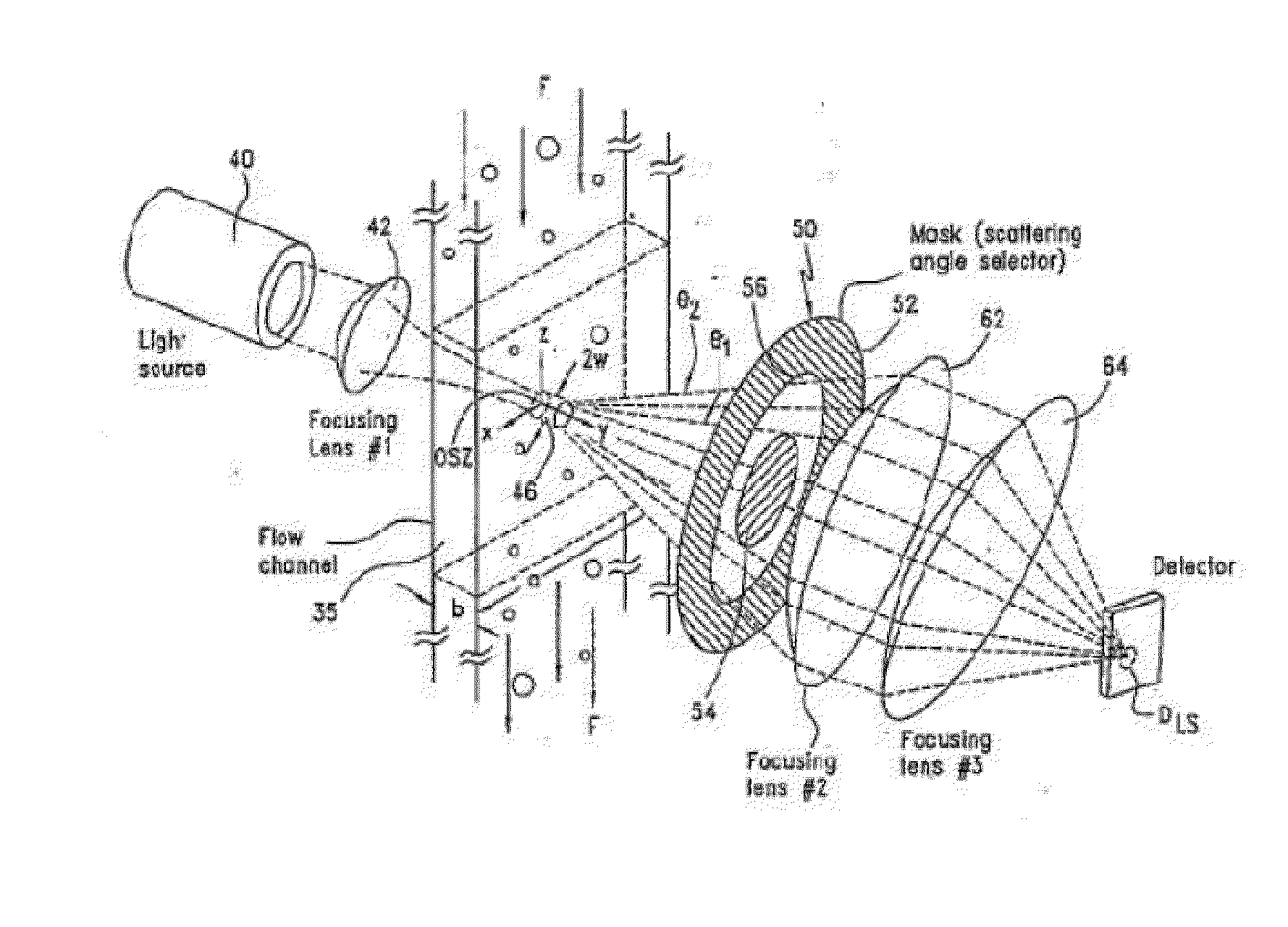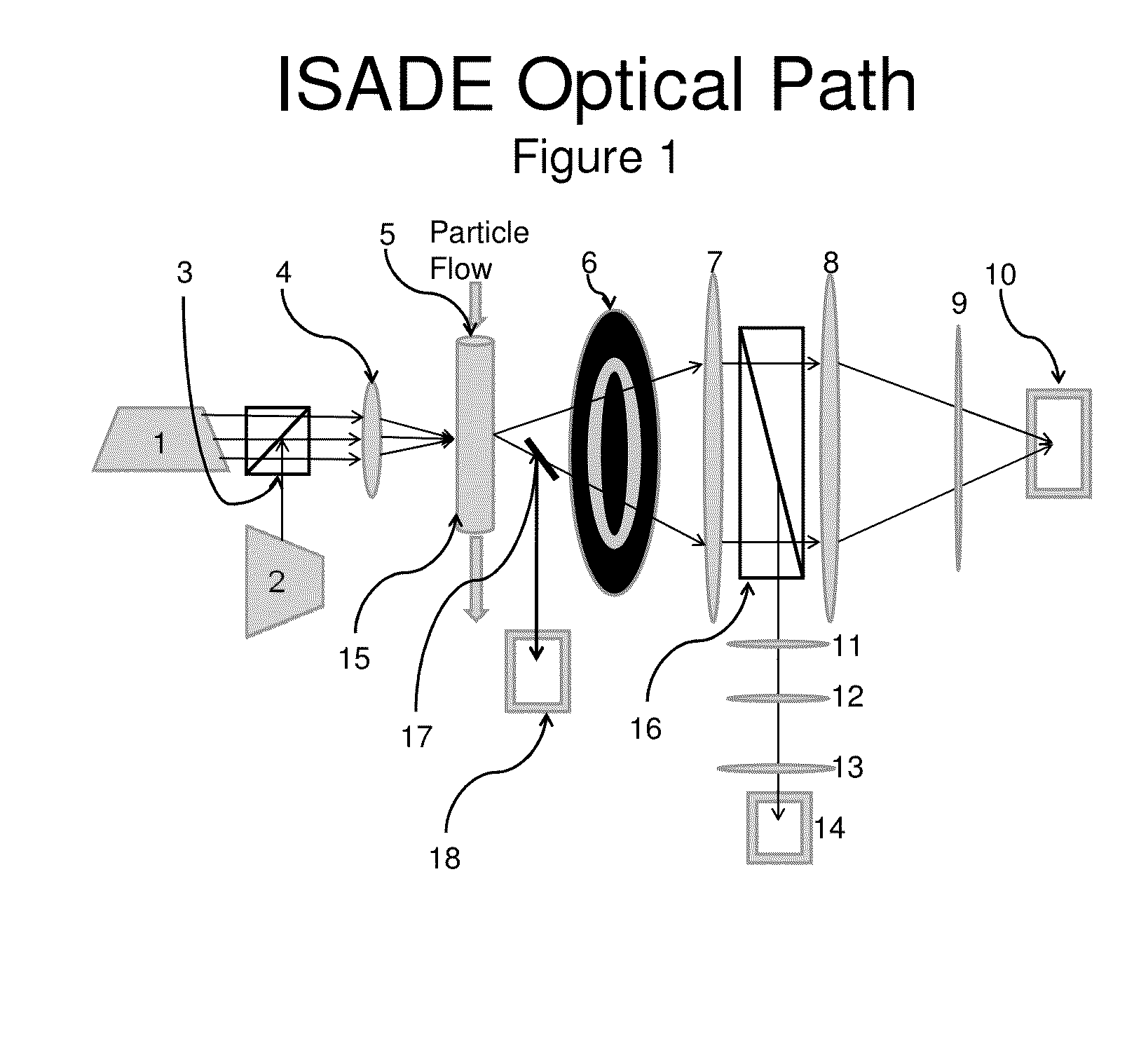Instrument and method for optical particle sensing
a technology of optical particle and instrument, applied in the direction of instruments, material analysis, biological material analysis, etc., can solve the problem of limited size of biological particles that can be analyzed using currently available technology
- Summary
- Abstract
- Description
- Claims
- Application Information
AI Technical Summary
Benefits of technology
Problems solved by technology
Method used
Image
Examples
example 1
Representative Focused Light Scattering Device
[0334]A representative focused light scattering device is shown in FIG. 1. A first laser (1) emits light at a first wavelength, and a second laser (2) emits light at a second wavelength. Both beams of light pass through a first beam splitter (3) and through a first focusing lens (4) before they enter into a flow cell (15). The flow cell includes a site (5) for hydrodynamic injection of the sample. As the platelets in the flow cell pass through the beams of light, the light is scattered as it hits the platelets. The scattered light passes through a circular spatial filter (6) and then through a first collimating lens (7). The light beam passes through a second beam splitter (16), which splits the light into two beams. A first beam passes through a second focusing lens (8) and through a first chromatic filter (9) that passes scattered light from the first laser (1) through a first detector (10). The second beam passes through a second coll...
example 2
Detection of Microparticle's (MP) Present in a Biological Sample
[0337]In this example, a specimen is subject to particle sizing and counting. After an appropriate dilution of the sample, the diluted specimen is introduced into the device for analysis. As counting proceeds, counts will accumulate in the size region less that 1 micron. The appearance of MP in this size region will indicate the presence of MPs.
example 3
Microparticle Characterization
[0338]Once MPs are detected, as described in Example 2, it may be important to determine the source of the MP (from platelets neutrophils, tumor cell, etc.). This Example provides two different options for characterizing the MP.
[0339]The first option is to use MP sizing and counts. In this case, the specimen is incubated with a second particle with a specific ligand conjugated to its surface. The choice of the ligand will depend on the specific MP be characterized. For example, if the MP of interest has coagulation tissue factor (TF) on its surface, the conjugated particle can be conjugated with an antibody against TF-particle or with coagulation factor FVII. Either ligand will specifically bind to MPs with TF on their surfaces.
[0340]When the conjugated particles are incubated with the anti-TF conjugated particles, a new size corresponding to the TF-MP+anti-TF-particles will appear when the MP and the probe particle are counted. In a like manner, other ...
PUM
| Property | Measurement | Unit |
|---|---|---|
| width | aaaaa | aaaaa |
| width | aaaaa | aaaaa |
| size | aaaaa | aaaaa |
Abstract
Description
Claims
Application Information
 Login to View More
Login to View More - R&D
- Intellectual Property
- Life Sciences
- Materials
- Tech Scout
- Unparalleled Data Quality
- Higher Quality Content
- 60% Fewer Hallucinations
Browse by: Latest US Patents, China's latest patents, Technical Efficacy Thesaurus, Application Domain, Technology Topic, Popular Technical Reports.
© 2025 PatSnap. All rights reserved.Legal|Privacy policy|Modern Slavery Act Transparency Statement|Sitemap|About US| Contact US: help@patsnap.com



